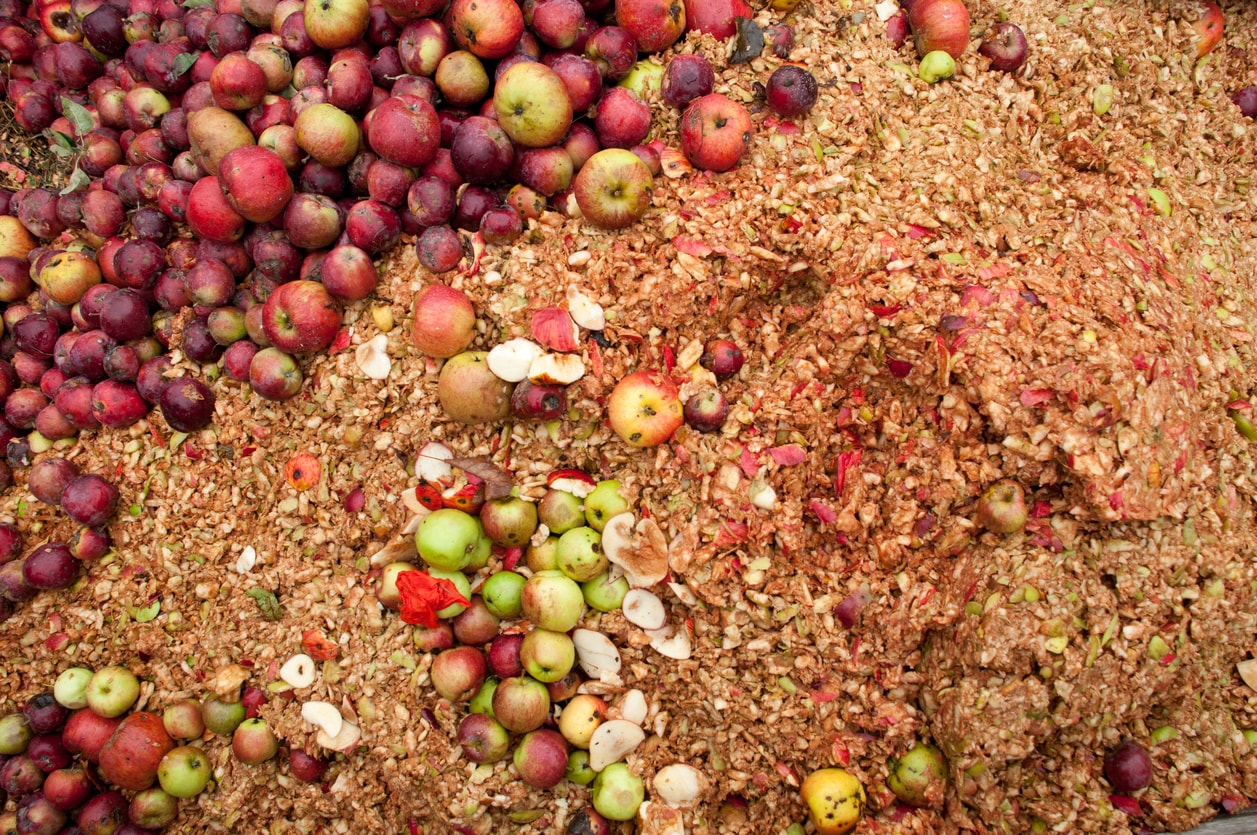gleaning: the practice of gathering unharvested produce that farmers or other landowners either neglected or intentionally left behind but is then available to feed the hungry. Referenced in several Old Testament passages.
*** TROVELOG ***
Two dozen gleaners—not to be confused with foragers or dumpster divers—showed up for the second annual International Gleaners Symposium, held recently at the Georgia Institute of Technology, in Atlanta. They were there to discuss the finer points of gathering neglected foodstuffs from roadsides, back yards, and other nonpublic places, and then donating them to the hungry.
The gleaners sat in a classroom, drinking coffee and eating store-bought grapes. They were awaiting remarks from Ashley Pruitt, a local lawyer specializing in civil litigation, who had volunteered to explain the surprising number of ways that one can run afoul of the law while picking unharvested fruits and nuts for homeless shelters and food banks, as more than four hundred volunteer groups in the United States now do.
. . .One attendee, Jennifer Jans, described herself as an “outreach raccoon” for Hidden Harvest, a gleaning outfit in Ottawa. “We rescue fruit and nuts, largely from yards,” she said. “People will sign up their trees. Maybe they don’t want to harvest them, or they have too much fruit.” She listed some commonly gleaned Ottawan comestibles: “cherries, pears, black walnuts, and the rare apricot tree.” Also, “lots and lots of crab apples, which I whine about, even though they’re nutritious and delicious.”
Emily Worm, a network manager for After the Harvest, in Kansas City, Missouri, explained the history of gleaning. “It goes back to the Bible,” she said. “Farmers were supposed to leave the corners of their fields unharvested for strangers, widows, and orphans.” She added, “I think that’s in Ruth? That’s a book in the Bible, right?” She gleans sixty kinds of produce—“everything from sweet corn to sweet potatoes,” she said. “Strawberries to mustard greens.”
See article at: Charles Bethea, “The Robin Hoods of Food Waste,” The New Yorker, April 30, 2018
◄TrovelogTrovelogTrovelogTrovelogTrovelogTrovelogTrovelog►
I had no epiphany. No transcendental enlightenment. At least not while I was walking down the long and verdant corridors of cornrows swaying and swishing like some cosmic leafed-out beaded curtains. I was there to work, to glean ripe sweet corn, one cob at a time… twist and tug, twist and tug, twist and tug… until my little corner of the field was harvested.
I was one of 20+volunteer gleaners who in two hours harvested over 1,700 pounds of fresh corn that would’ve otherwise been plowed under. We represented a wide swathe of community who’d come out to do some good work on an achingly beautiful late-summer morning. And Jamie O’Gorman, our leader and the coordinator of Island Grown Gleaning (IGG) (https://www.islandgrown.org/gleaning) made short order of getting the corn into the hands of school cafeteria directors to help support healthier lunches for students. From that one farm (www.morninggloryfarm.com) the bounty was quickly distributed as donations first to the schools and then to elder centers, recovery and employment programs and even the county jail. IGG manages gleans that have donated over 12,000 pounds of fresh veggies like greens, carrots, beets, beans, corn and squashes, in this growing season alone.
. . .
In Deuteronomy 24:19-22 from the Torah portion, Ki Tetzei, three times God commands farmers to leave food in their fields for “… the stranger, the fatherless and the widow.” Rabbi Caryn Broitman of the Martha’s Vineyard Hebrew Center interprets “the stranger” as today’s immigrants. “The fatherless” as children “and the widow” as the elderly and the unemployed because historically, a widow was one who had no ability or access due to circumstances, to make a living on their own. Gleaning quite literally connects the margins of the fields to the people who are marginalized in our food systems, one harvest at a time.Today, good whole food is being plowed under while there’s a battle raging out there about highly processed, sugared and fatty foods generally served to students in school systems. The frightening epidemic of childhood obesity and type 2 diabetes is so disturbing and seemingly ironic, against the backdrop of the USDA’s recently released stats on the number of children in our country who were “food insecure” in 2010:16.2 million. Food (re)distribution, access and costs are complex, multi-dimensional issues. But it’s the kind of food and the kind of education we provide for our children that raises awareness, creates change and solutions to our problems.
There are many legitimate reasons (beyond Biblical commandments) why a farm will have food left in its peripheries, vulnerable to being tilled under and they are not necessarily reflections of bad or wasteful farming practices. Frequently it’s situational, such as a lack or loss of labor or severe and dramatic changing weather patterns. On larger farms, mechanized harvesting techniques can skip over produce. Blemishes on tomatoes for example, can deem them as seconds, and hence not economically valuable enough for a farmer to harvest whilst they will be perfectly good, healthy and safe to eat or to process or put up for later. The potential to help feed the margins is all in the farms. It’s a matter of connecting the dots to get it to them.
See blog post at: Ali Berlow, “Gleaning: A Biblical Act of Generosity,” Huffington Post, September 22, 2011
◄TrovelogTrovelogTrovelogTrovelogTrovelogTrovelogTrovelog►
On U.S. farms, gleaning is making a comeback, as a national anti-hunger organization has turned to the ancient practice to help feed the poor. And it also gives farmers a way to use produce that would otherwise be wasted.
In the Old Testament, farmers are told not to pick their fields and vineyards clean, but instead to leave the edges for orphans, widows and travelers. In the modern day, gleaning is more about preventing would-be waste.
Food gets left in the field for all kinds of reasons. Two big ones are that mechanical harvesting misses a lot — and sometimes the crops aren’t pretty enough for supermarket shelves.
“The statistics are that 96 billion pounds of food are left — this is pre-consumer food — goes to waste in this country,” says Linda Tozer of the Society of St. Andrew, an organization that coordinates farmers around the Southeast and out West.
See article at: Blake Farmer, “Gleaning A Harvest For The Needy By Fighting Waste,” NPR, January 20, 2011
◄TrovelogTrovelogTrovelogTrovelogTrovelogTrovelogTrovelog►
Selected Old Testament references:
And thou shalt not glean thy vineyard, neither shalt thou gather every grape of thy vineyard; thou shalt leave them for the poor and stranger: I am the LORD your God.
— Leviticus 19:10And when ye reap the harvest of your land, thou shalt not make clean riddance of the corners of thy field when thou reapest, neither shalt thou gather any gleaning of thy harvest: thou shalt leave them unto the poor, and to the stranger: I am the LORD your God.
— Leviticus 23:22When thou gatherest the grapes of thy vineyard, thou shalt not glean it afterward: it shall be for the stranger, for the fatherless, and for the widow.
— Deuteronomy 24:21And she went, and came, and gleaned in the field after the reapers: and her hap was to light on a part of the field belonging unto Boaz, who was of the kindred of Elimelech.
–Ruth 2:3
◄TrovelogTrovelogTrovelogTrovelogTrovelogTrovelogTrovelog►
See related Trovelog posts: lunch shaming <>






